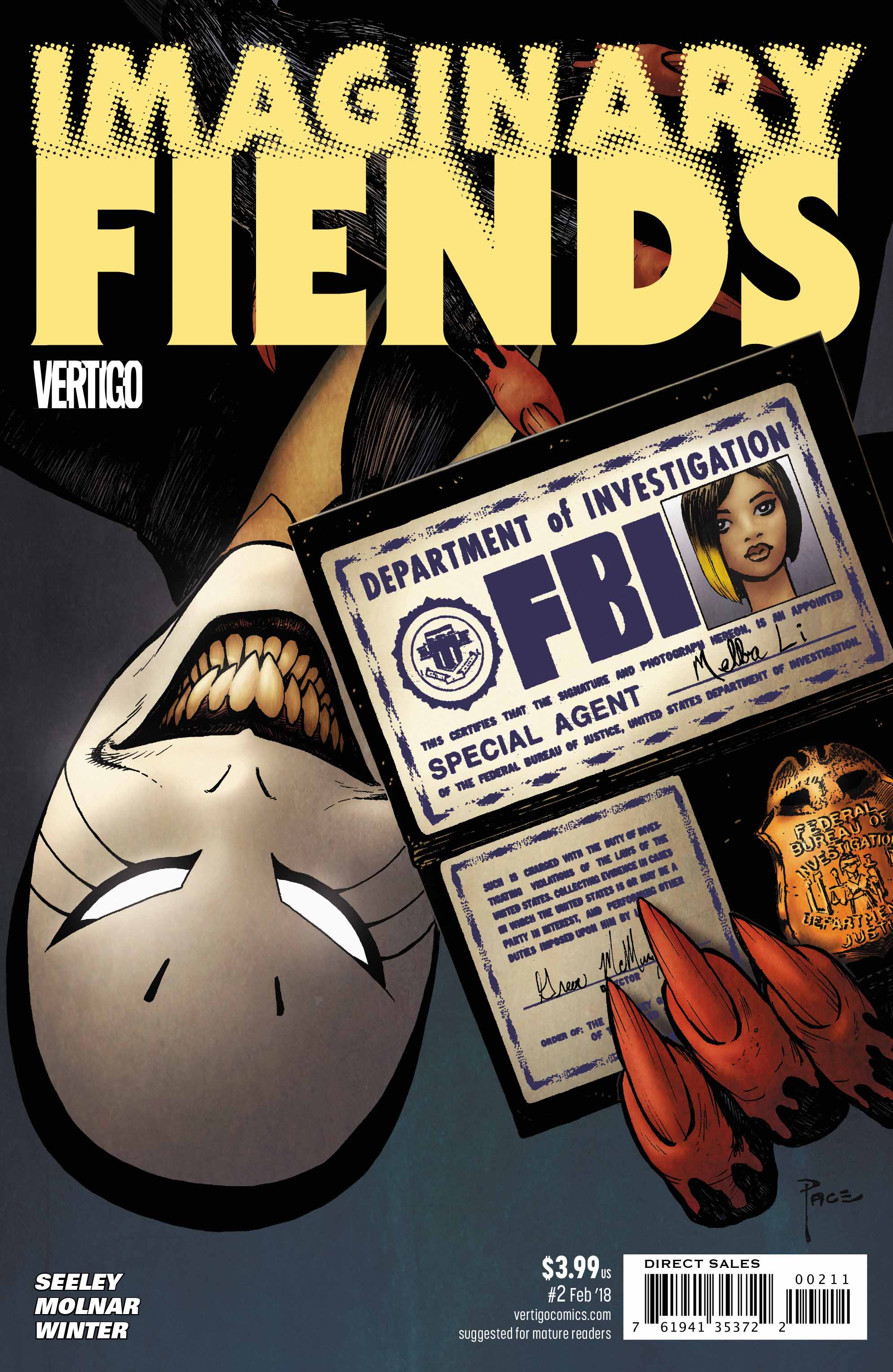[Editor’s Note: This review may contain spoilers]
Writer: Tim Seeley
Artists: Stephen Molnar, Quinton Winter
Summary
After officially joining the FBI, Melba Li helps Virgil Crockett with their first case together as part of the I.M.P. division. The investigation gets off to a slow start as Melba would rather go outside and explore after years of being locked inside mental hospitals. But her first time with alcohol may make her reconsider this exploration.

Positives
Imaginary Fiends features third person narration, which is something lacking in most modern comics. The idea of a narration to help the reader harkens back to the days of the silver and golden ages when comics often had narration captions. By linking back to comic’s childhood, Tim Seeley manages to make the reader feel like a kid again, which in turn connects them with Melba Li. She’s experiencing everything for the first time after years of solitude, which again adds to the childish innocence the comic creates.
This theme of innocence and childhood is great because it emphasizes almost every aspect of the story. As a horror comic, it’s challenging to create something truly scary, especially when readers have the ability to turn the page or put the comic down. But with narration captions the readers are forced to move along at the pace Seeley wants. This pace drags them along to horrific artwork. Horrific in the terrifying sense.
I wondered how the issue would still manage to be scary after the first issue but it succeeds. The monster designs are hard to describe for sane people. Seeley has managed to take some of the darkest imaginations possible and give them to Stephen Molnar to depict. By the end of the issue, readers will be unsettled with what they’ve read. You want to put the book down, to look away, but you can’t.
When the art isn’t scary it’s still fantastic with the colouring of Quinton Winter being especially muted. The issue has a mainly pastel colouring. This again reminds me of early childhood drawings, so it links with the theme. Everything in the issue really does work well together.
One last thing that stands out to me is the dialogue of the Imaginary Fiends. Polly Peachpit in particular is a much deeper character than I could have imagined. The way in which she victimizes Melba Li, yet holds her close, is a fantastic example of an abusive relationship. The realism of the dialogue contrasted with the absurdity of an Imaginary monster makes for some great reading.
Negatives
There really isn’t anything negative to say. In places the dialogue is a little stiff. With Melba there are a few lines that feel like they exist purely to push the characters onto the next scene. I want to believe this is just because she’s spent so much time behind bars, but we’ll see as the series progresses.
Also, without delving into spoilers, there are some characterizations in this issue that feel a bit ‘random.’ As if Seeley thought of the weirdest things he could then added it. For the most part it works, but on one occasion I was taken out of the book by how random a certain scene was.
Verdict
Tim Seeley and Stephen Molnar continue to deliver a fantastically scary horror comic that taps into the childhood innocence of the medium. This isn’t a series to miss for readers that like original ideas, frights, artwork or well written prose.
